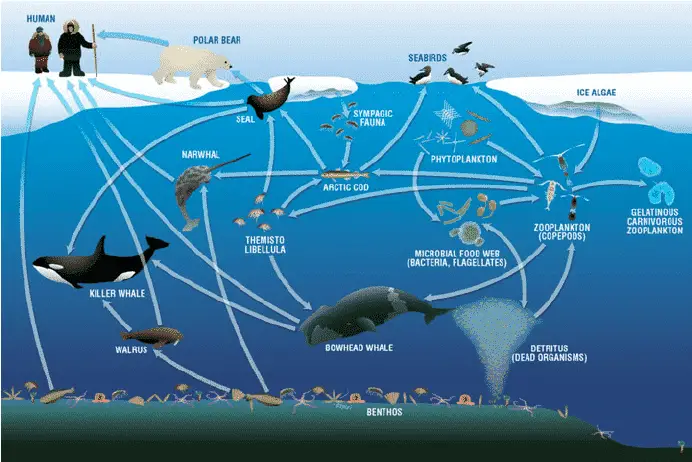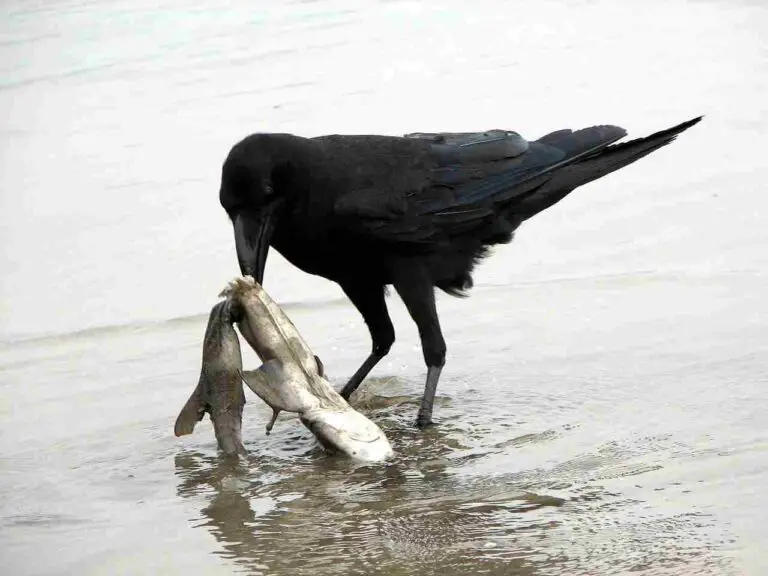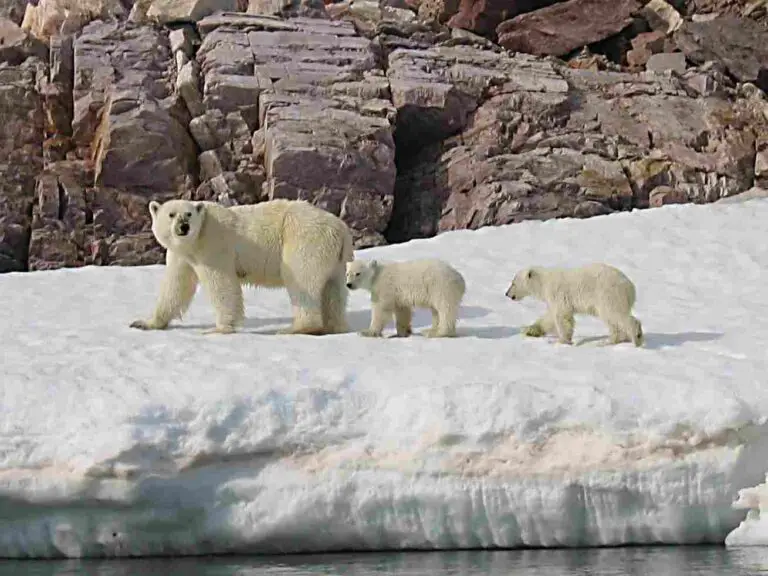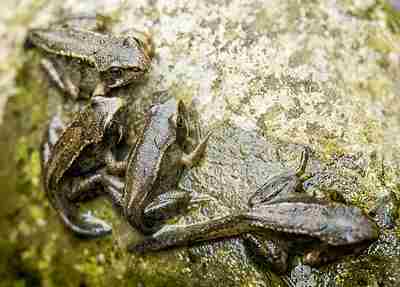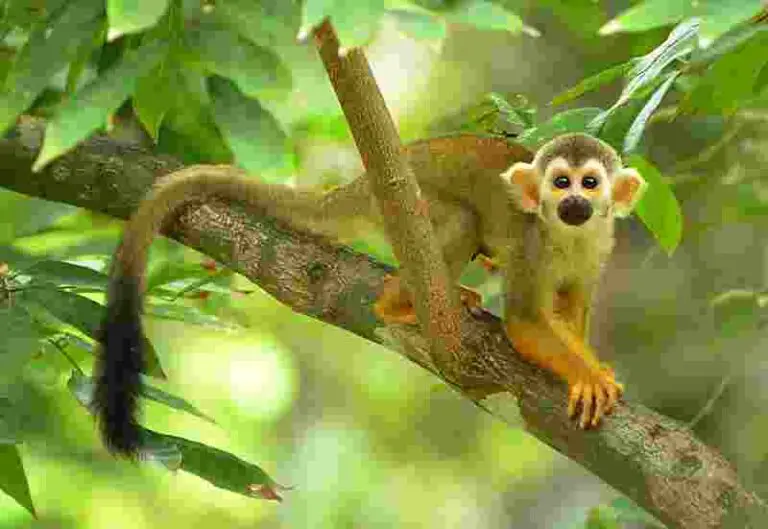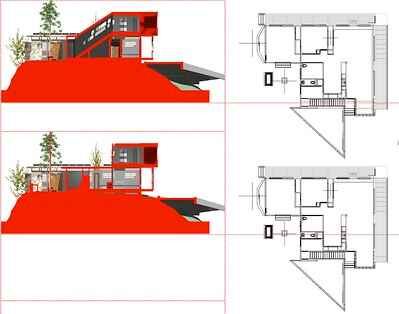Marine Food Chain, Marine Food Web: Trophic Levels and Examples
Marine food chain is a linear model of the hierarchical trend of food consumption and energy transfer in marine ecosystems. Marine food web is a network formed by the interdependence of multiple marine food chains.
This article discusses the food chain and food web of a marine ecosystem respectively, as outlined below;
-Trophic Levels of the Marine Food Chain
-Examples of Marine Food Chains
Trophic Levels of the Marine Food Chain
A food chain in marine biology is an ecologic concept that details the hierarchical sequence by which bioenergy is transferred between various groups of saltwater plants and animals in a marine ecosystem.
Trophic levels of the marine food chain are; Level 1 (producers), Level 2 (primary consumers), Level 3 (secondary consumers), Level 4 (tertiary consumers) and Level 5 (quaternary consumers). Quaternary consumers of Level 5 are only included in food chains of highly-complex marine ecosystems, where there is significant biodiversity of consumers. This means that marine food chains often comprise of four trophic levels.
Each of these levels is discussed briefly below;
1). Level 1: Producers (as one of the Trophic Levels of the Marine Food Chain)
Also known as autotrophs, the producers in a marine food chain and ecosystem, are organisms that are capable of manufacturing their own food using solar energy and inorganic compounds like carbon dioxide.
Producers are responsible for introducing energy and biomass into any ecosystem, and occur at the lowest trophic level of nearly all ecological models, including energy pyramids and biomass pyramids.
The three main groups of marine producers are; monerans (including specialized prokaryotic organisms), phytoplankton (microbial and macrobial plants), and vascular saltwater plants.
Examples of marine producers that can be found in the ocean and other saltwater bodies are; green algae (chlorophyta), dinoflagellates, cyanobacteria, and sargassum.
Most producers in marine ecosystems are found at or near the surface of the water body, because they depend on sunlight for photosynthesis.

2). Level 2: Primary Consumers (as one of the Trophic Levels of the Marine Food Chain)
Primary consumers in marine ecosystems, are herbivorous organisms that feed directly on marine producers for survival.
Examples of marine primary consumers in the food chain are; zooplankton, which include small crustaceans, as well as some small species of fish [3].
Marine primary consumers are heterotrophic, and incapable of producing their own food, hence their dependence on producers.
3). Level 3: Secondary Consumers (as one of the Trophic Levels of the Marine Food Chain)
Secondary consumers in the marine food chain are carnivorous organisms that prey on marine primary consumers, or saltwater herbivores. Some marine secondary consumers can also exhibit omnivorous behavior, thereby preying on both producers and primary consumers.
Examples of secondary consumers in marine food chains are; corals, sea otters, herring, small sharks, squid, and tuna. These organisms feed on zooplankton.
In some marine ecosystems with significant biodiversity, tuna may be classified above other organisms like herring and squid, because they (tuna) are relatively large predators in adulthood, and may feed on these consumers.

4). Level 4: Tertiary Consumers
Tertiary consumers in the marine food chain are usually the apex predators at the top of the food chain.
These organisms are known for their carnivorous feeding habits, large relative size (compared to other marine organisms), and high level of biodiversity.
Tertiary consumers in marine food chains range from highly-specialized and adapted mammals to large fish and reptiles. Examples of these marine tertiary consumers are; saltwater crocodile, shark, orca, seal, polar bear, and walrus.
In oceans where there is a broad variety of large predators, the feeding relationships among them may establish a fifth trophic level; occupied by the quaternary consumers.
An example of a marine food chain with quaternary consumers is one in which orcas prey on seals, and polar bears prey on walruses. The predators in these relationships can be seen as quaternary consumers.
Mammals with terrestrial adaptations, like the polar bear, are classified among marine animals because they also have significant adaptive physiological features and behaviors that enable them depend on oceans for food, thereby contributing to the recycling of energy and biomass in marine terrains.
On the other hand, because of their terrestrial adaptations, these organisms can also be classified as part of terrestrial ecosystems like tundras [1].
Examples of Marine Food Chains
3 Examples of marine food chains are;
1). Sargassum→Shrimp→Herring→Sea Otter→Orca
(Sargassum or seaweed acts as Producer. Shrimp acts as Primary Consumer by feeding on seaweed. Herring acts as Secondary Consumer; Sea Otter preys on herring (Tertiary Consumer); and Orca preys on sea otter (Quaternary Consumer). The food chain is a 5-level model).
2). Chlorophyta→Radiolaria (zooplankton)→Coral→Parrotfish
(Green Algae or Chlorophyta is the Producer in this food chain. It is consumed by the Radiolaria, a planktonic animal or zooplankton, which acts as Primary Consumer. Coral feeds on radiolaria (Secondary Consumer); while Parrotfish (Tertiary Consumer) feeds on coral. This often occurs in the process of consuming algae that grows among corals).
3). Seagrass→Manatee→Great White Shark→Sperm Whale
(Seagrass is the Producer in this food chain, which manufactures food through photosynthesis. The Manatee; a saltwater mammal, grazes on seagrass as part of its herbivorous diet (Primary Consumer). In rare cases, the carnivorous Great White Shark may cross paths with manatees, which can be consumed as prey (Secondary Consumer). Larger predators like the Sperm Whale may subsequently prey upon the shark (Tertiary Consumer)).

Marine Food Web
Food web in a marine ecosystem refers to a complex ecological model showing the network of feeding interrelationships among diverse organic groups, and along multiple, active food chains [2].
The marine food web can also be described as a network of interlinked food chains.
Food chains that form the ocean food web include simple, microbial 3-level chains; and complex 4-and 5-level chains comprising of both micro and macroscopic organisms.
For example; three food chains from the ocean food web can be linked at various trophic levels; such as the relationships formed when primary consumers from two food chains feed on the same primary producer, like green algae, and when a single tertiary consumer like the orca, preys on consumers in three food chains simultaneously.
Marine food webs can also feature a single organism functioning at various trophic levels in various, interlinked food chains.
The three main groups of organisms in the marine food web are;
1. Non-dependent organisms
2. Co-dependent organisms
3. Multi-dependent organisms
These can be distinguished by the manner of their feeding relationships to other marine organisms.
Non-dependent organisms in the marine food web are usually producers, which generally do not prey on other organisms but produce their own food.
The main link between these organisms and other marine organisms is based on geochemical cycling of nutrients, where the producers may ingest some nutrients released during the metabolism or biodegradation of other organisms. Such cycling processes can account for the function of marine ecosystems as carbon sinks.
Co-dependent organisms in the marine food web include consumers that share the same food source; such as various species of saltwater crustaceans feeding on green algae.
Secondary consumers in a marine food web can act as co-dependent organisms by consuming similar groups of primary consumers, such as a scenario where corals and squids both prey on zooplankton.
Multi-dependent organisms in marine food webs are apex predators at the tertiary or quaternary levels, which can consume organisms from multiple trophic levels, on multiple food chains.
An example of multi-dependent behavior is the consumption of crustaceans, fish, squids and manatees by orcas at the apex predatory level. These interactions link multiple food chains to each other in marine ecosystems, to form the complex ecological networks known as food webs.
Lastly, due to their complex nature, marine food webs may feature non-marine animals, like humans. This is shown in the hypothetical illustration below;

Conclusion
A marine food chain is a linear and hierarchical model of the feeding relationships of various organic groups in marine ecosystems.
Trophic levels of the marine food chain are;
1. Level 1: Producers
2. Level 2: Primary Consumers
3. Level 3: Secondary Consumers
4. Level 4: Tertiary Consumers
3 Examples of marine food chains are;
1. Sargassum→Shrimp→Herring→Sea Otter→Orca
2. Chlorophyta→Radiolaria (zooplankton)→Coral→Parrotfish
3. Seagrass→Manatee→Great White Shark→Sperm Whale
A marine food web is a network of interlinked food chains that show the complex, diverse and multi-dimensional feeding relationships between various groups of marine organisms.
Three main groups of organisms in the marine food web are; non-dependent, co-dependent, and multi-dependent organisms respectively.
References
1). Balasubramnian, A. (2013). "THE TUNDRA BIOME." Available at: https://www.researchgate.net/publication/314211666_THE_TUNDRA_BIOME. (Accessed 15 April 2023).
2). Marina, T. I.; Saravia, L. A.; Cordone, G.; Salinas, V.; Doyle, S. R.; Momo, F. R. (2018). "Architecture of marine food webs: To be or not be a 'small-world'." PLoS One. 2018 May 29;13(5):e0198217. Available at: https://doi.org/10.1371/journal.pone.0198217. (Accessed 15 April 2023).
3). Sommer, U.; Stibor, H.; Katechakis, A.; Frank, S.; Thomas, H. (2002). "Pelagic food web configurations at different levels of nutrient richness and their implications for the ratio fish production: primary production." In: Sustainable Increase of Marine Harvesting: Fundamental Mechanisms and New Concepts: Proceedings of the 1 st Maricult Conference held in Trondheim, Norway, 25-28 June 2000. , ed. by Vadstein, Olav and Olsen, Yngvar. Developments in Hydrobiology, 167 . Springer, Berlin, Germany, pp. 11-20. Available at: https://doi.org/10.1007/978-94-017-3190-4_2. (Accessed 15 April 2023).
